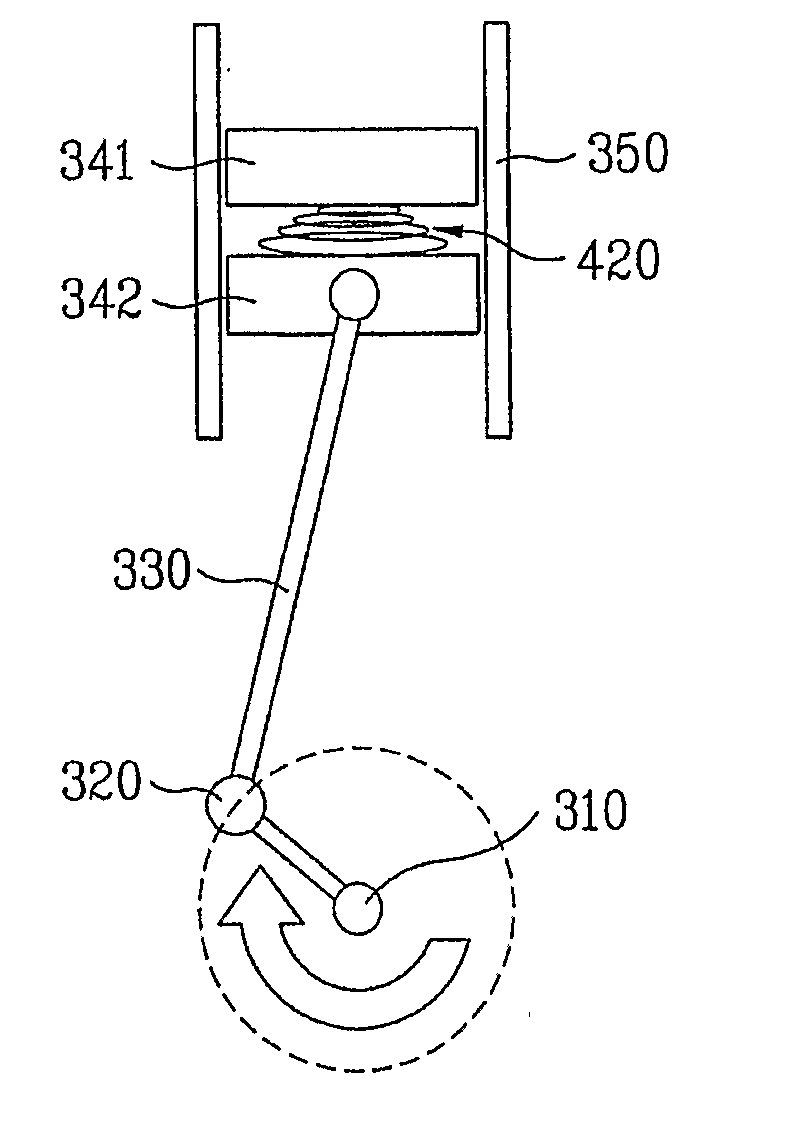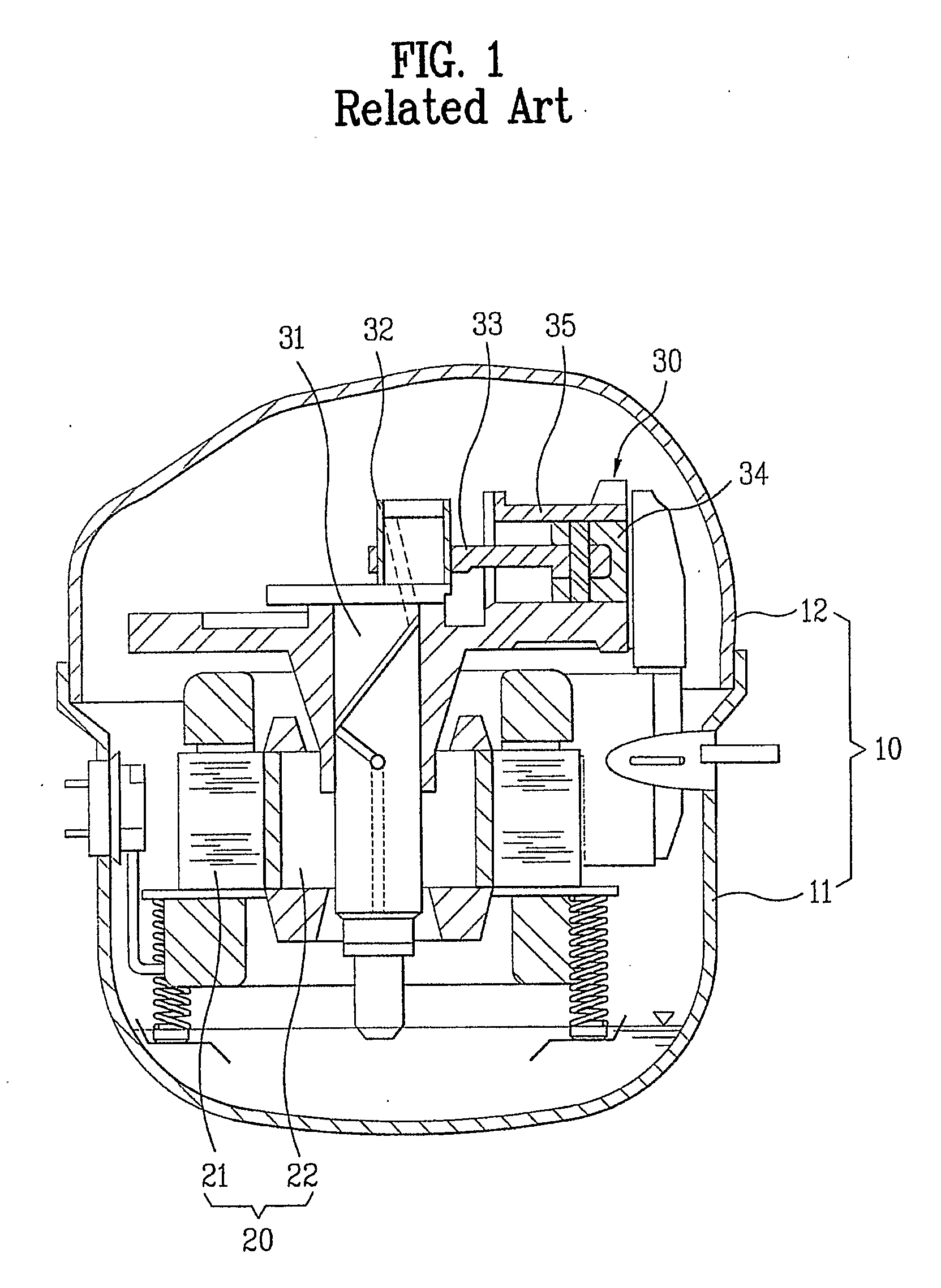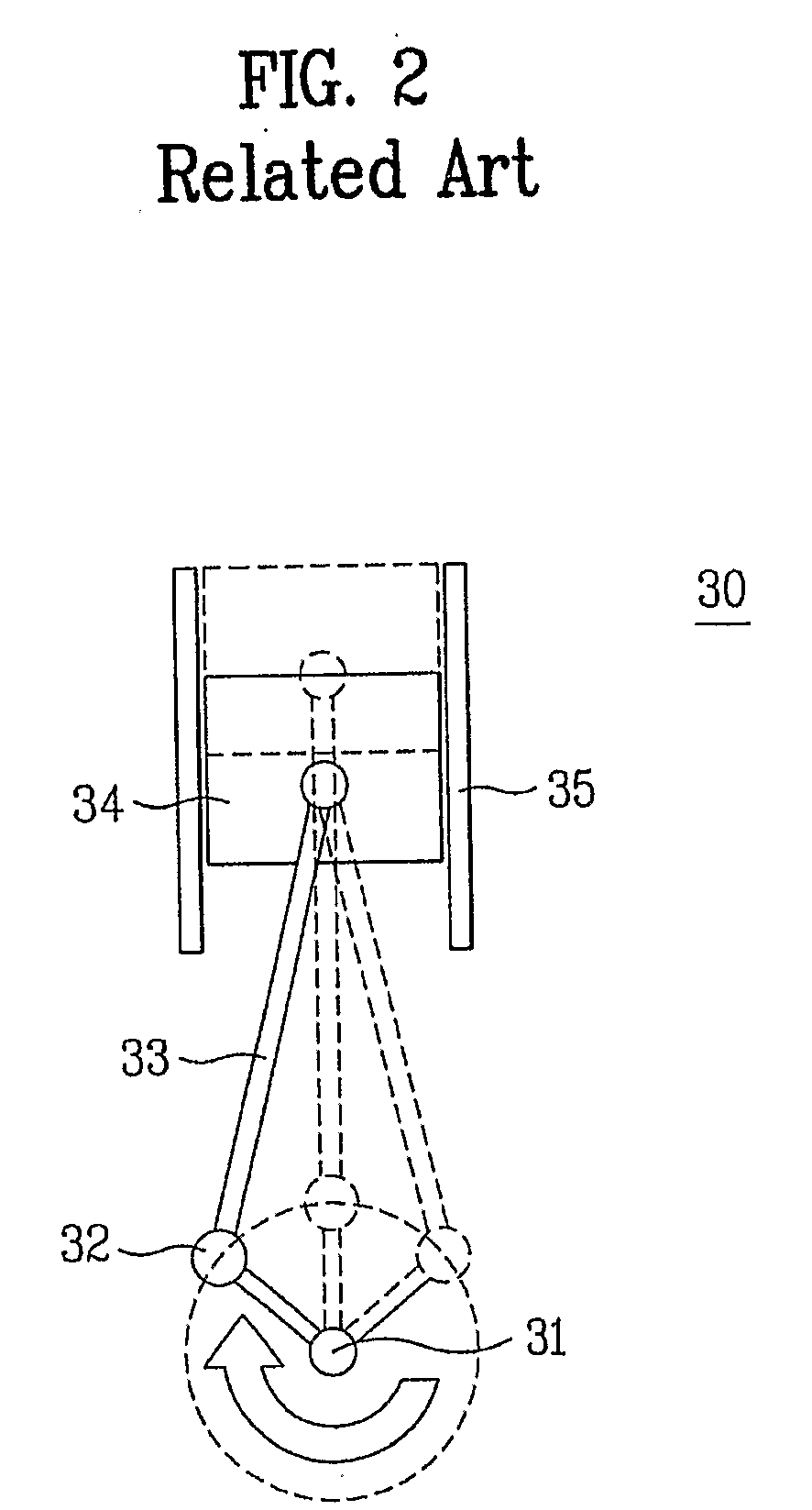Compressor
a compressor and reciprocating technology, applied in the field of compressors, can solve the problems of reducing the rotation speed of the rotor b>22/b>, affecting the suction efficiency of refrigerant, and the reciprocating type compressor of the related art cannot be used, so as to improve the suction efficiency, reduce the difficulty of drawing refrigerant, and slow compression
- Summary
- Abstract
- Description
- Claims
- Application Information
AI Technical Summary
Benefits of technology
Problems solved by technology
Method used
Image
Examples
first embodiment
[0029]Referring to FIGS. 3A˜3C, a first embodiment suggests positioning of the supplementary torque providing part such that compression and restoration of the supplementary torque providing part are made along a direction of movement of the piston 340.
[0030]For this, the supplementary torque providing part includes a first elastic member 410 having one end fixed to one stationary part inside of the compressor, and the other end in contact with the eccentric part 320 for extending or contracting along a moving direction of the piston 340 in compression of the refrigerant to increase a level of torque storage therein.
[0031]That is, the first elastic member 410 is a plate spring in contact with an outside circumferential surface of the eccentric part 340 so that the first elastic member 410 provides a restoration force to the eccentric part 320 in a direction opposite to the moving direction of the piston 340 in compression of the refrigerant, and, particularly, the first elastic memb...
second embodiment
[0042]That is, the present invention suggests fitting a supplementary torque providing part in the piston 340. For this, the piston 340 includes a first piston 341, and a second piston 342, and the supplementary torque providing part is provided between the pistons 341 and 342, with both ends thereof connected to the pistons 341 and 342.
[0043]The supplementary toque providing part includes a second elastic member 420 which is compressed when the refrigerant is compressed, and restored when the refrigerant is drawn. The supplementary torque providing part 420 is either a coil spring, or a plate spring.
[0044]Particularly, as shown, the second embodiment suggests the second elastic member 420 to be a conical coil spring that has a diameter which becomes the greater as it goes toward a side connected to the connected rod 330 the more.
[0045]Of course, the piston 340 may include, not only two pieces of pistons 341, and 342, but also a plurality of pieces of pistons, more than three, when ...
third embodiment
[0057]Referring to FIGS. 6A˜6C, a third embodiment suggests providing the supplementary torque providing part to the connecting rod 330.
[0058]For this, the connecting rod 330 is divided into a first connecting part 331 and a second connecting part 332, and the supplementary torque providing part is provided between the first connecting part 331 and the second connecting part 332. The first connecting part 331 is connected to the piston part 340, and the second connecting part 332 is connected to the eccentric part 320.
[0059]Moreover, the supplementary torque providing part includes at least one third elastic member 430 having opposite ends connected to opposite surfaces of the first connecting part 331 and the second connecting part 332. The third elastic member 340 is a plate spring, and connected to the connecting parts 331 and 332 with at least one of joining type, selected from bolt, screw, rivet, and welding.
[0060]That is, referring to FIG. 6A, in the third embodiment of the pr...
PUM
 Login to View More
Login to View More Abstract
Description
Claims
Application Information
 Login to View More
Login to View More - R&D
- Intellectual Property
- Life Sciences
- Materials
- Tech Scout
- Unparalleled Data Quality
- Higher Quality Content
- 60% Fewer Hallucinations
Browse by: Latest US Patents, China's latest patents, Technical Efficacy Thesaurus, Application Domain, Technology Topic, Popular Technical Reports.
© 2025 PatSnap. All rights reserved.Legal|Privacy policy|Modern Slavery Act Transparency Statement|Sitemap|About US| Contact US: help@patsnap.com



